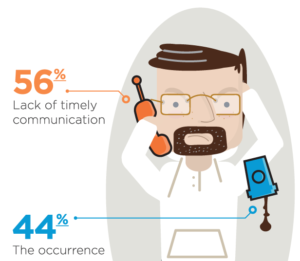Survey Debunks a Major Incident Fallacy


View the Major Incident Management survey infographic
There is a fallacy that states that major incidents like infrastructure failure and application downtime occur so rarely that notification systems are really just insurance policies.
Well, an intelligent communication system is not like earthquake preparedness. Even in earthquake country like California, you’re likely to go several years or even decades without a major destructive quake. An independent survey of IT professionals tells a very different story about major incidents.
Survey Says…
More than two-thirds of companies in the survey say they experience a major incident at least several times a year. But that figure rises for companies with at least 5,000 employees to a staggering 95%!

It shouldn’t come as a surprise that more than 80% of survey respondents say that business application downtime has a significant impact on revenue. But just how much impact it has is made clear by a recent paper by research firm IDC, which demonstrates that critical application failure costs up to $1 million per hour.
So those are some of the risks. What can IT professionals and executives do to minimize these situations?
Back to the Survey
You might think business stakeholders are irritated by major incidents – and you’d be right, but there are things that they find even more irritating. For instance:
- 56% are more frustrated by a lack of communication during an outage than the outage itself.
- 87% are not OK with being uninformed during a major incident.
Based on these figures, it makes sense to automate communication during major incidents. Surprisingly, fewer than half use an automated communication solution.
By adding intelligence to automation through tailored rules and escalation processes, businesses are limiting outages and saving money. Find out more in our new infographic, and by reading our full survey report.
